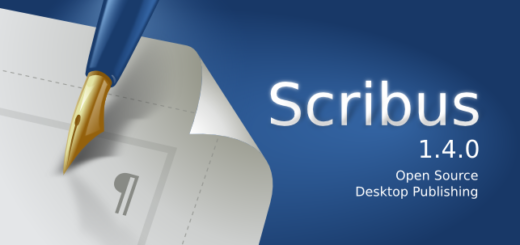
Let’s get this straight from the start! Desktop publishing is not the easiest thing in the world to learn. I remember fifteen years ago sitting in front of a new copy of QuarkXPress that had cost the princely sum of £1,400 (that’s pounds!) and not having a clue what to do with it. I could make it do nothing. That’s because everything has to go in a box. You want a coloured circle – you have to make a box. You want text – you have to make a box. You want a picture – you have to make a box.
Once you get over that hurdle, then the real learning begins. There are all sorts of tips and tricks and things you just have to know about fonts, bleed, crops, image resolution etc. when producing something on paper for the real world. (I have listed some of them here.)
Scribus is a tool that I have been using for about five years – since my last version of Quark finally stopped working on newer operating systems and I didn’t feel like paying out the €1,000 plus for a newer version and the whole world was falling into a financial hole. It does have a couple of idiosyncrasies, the biggest one being that you can’t just select text and make it bold or italic: you have to change the text to a bold or italic font-face in the text settings using a drop down. (This makes perfect sense in terms of not using faux bold and italics, but it would be better if a pop-up was triggered when you tried to use a font-variant that doesn’t exist.) A couple of the features, such as text run-around for images are also a bit obscure although very easy to use once you find out how. All-in-all though, I have found it to be very useful and powerful as a layout tool and it has never refused to do anything that I wanted it to. I have used it for posters, fliers, brochures, newsletters, concert posters and mixed content books and booklets and it has done a very fine job of all.
If you fancy getting stuck in, there is a good manual available as a pdf at en.flossmanuals.net that will guide you through most of the tools available in a hands-on fashion. Just to note: in order to handle certain types of images you need to install a ‘Postscript and PDF Interpreter’ available from ghostscript.com. You can download Scribus at www.scribus.net. Don’t download the 1.5 edition as it is there mainly for testing purposes. 1.4.x is stable and much more advisable (as of August 2015).
